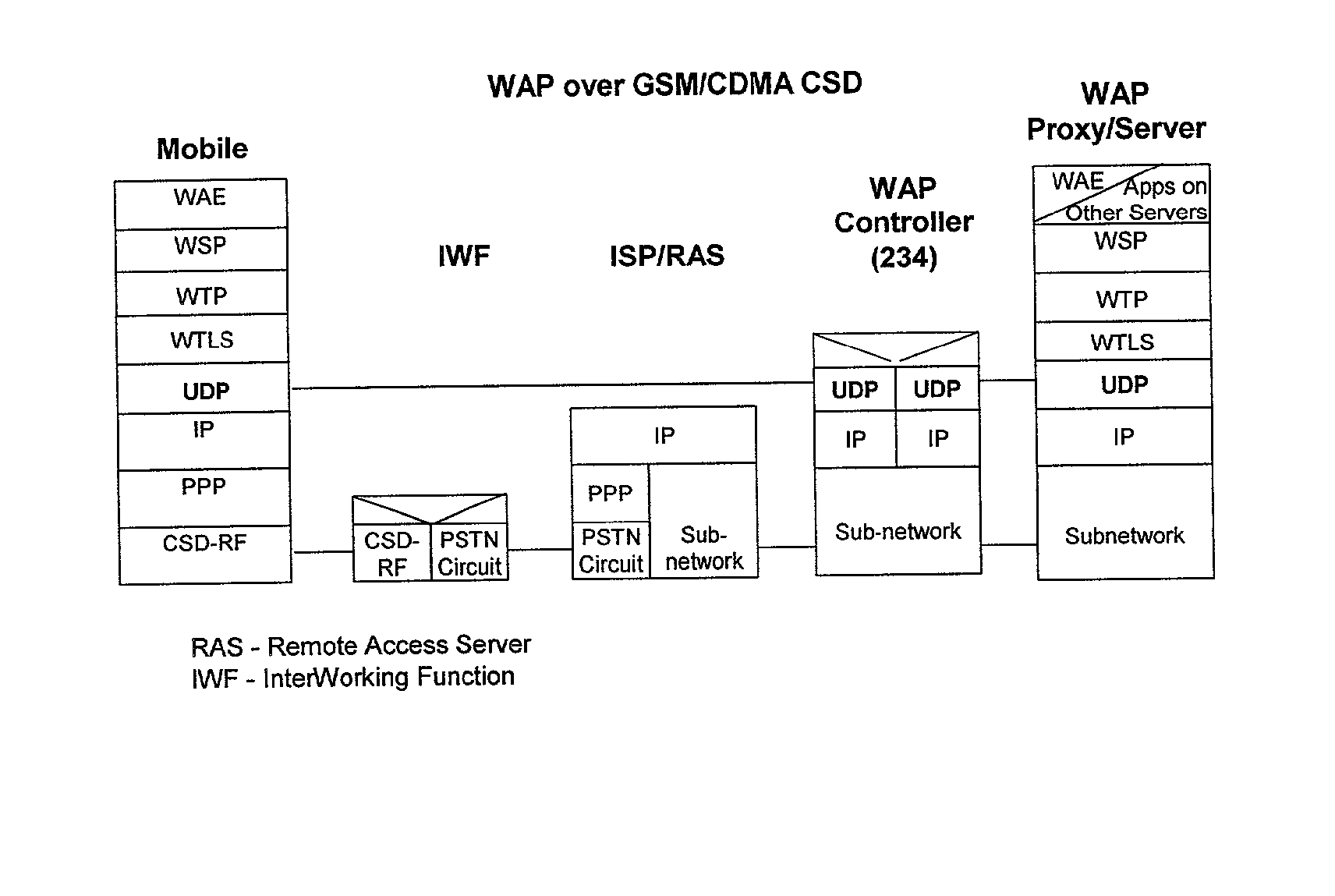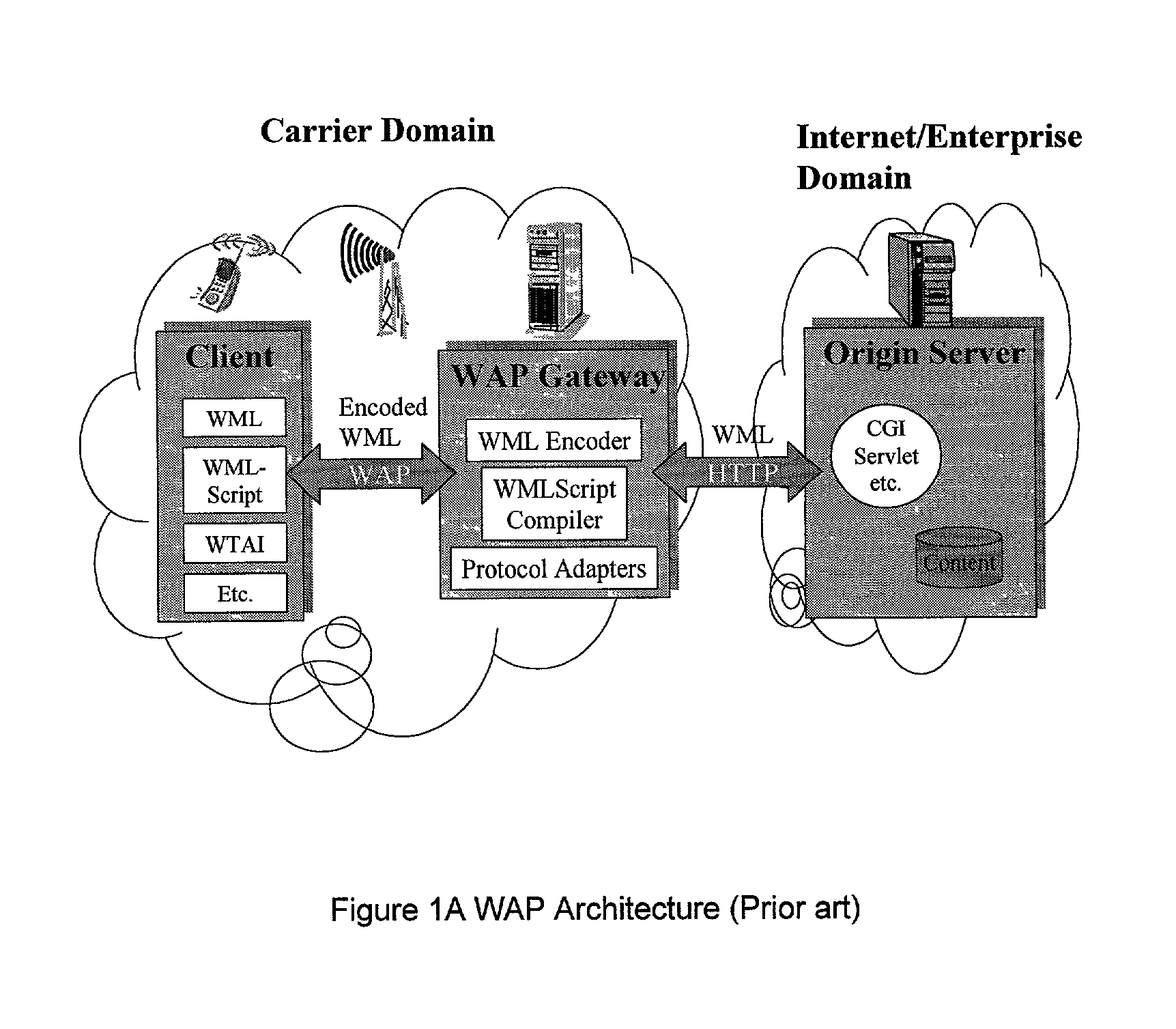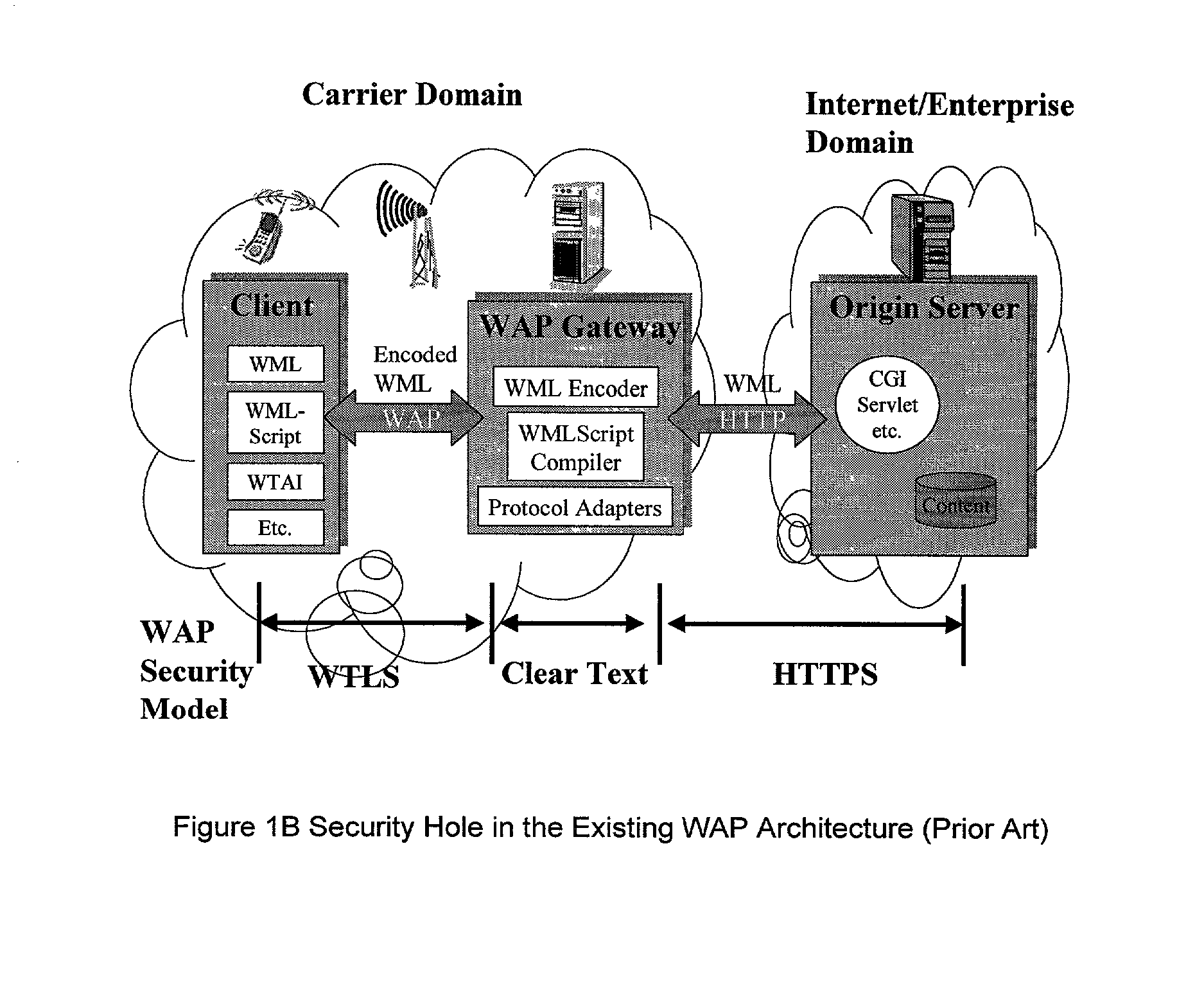Method and apparatus for providing service selection, redirection and managing of subscriber access to multiple WAP (Wireless Application Protecol) geteways simultaneously
a technology of wireless application protecol and redirection and management, applied in data switching networks, multiplex communication, wireless communication, etc., can solve the problems of limited power consumption, small display, and several operational constraints of wap devices
- Summary
- Abstract
- Description
- Claims
- Application Information
AI Technical Summary
Problems solved by technology
Method used
Image
Examples
Embodiment Construction
[0013] The embodiments disclosed herein relate to the development and use of a smart controller to provide dynamic service selection, policing, redirection and management of WAP (Wireless Application Protocol) traffic, or like wireless data traffic, in a wireless data network. In particular the embodiments relates to:
[0014] 1. The development of a dynamic integrated subscriber WAP routing table (305) of FIG. 3 that combines subscriber's individual service profile, the subscriber's WAP-gateway selection and the WAP-gateway's service profiles.
[0015] 2. The use and application of the above "table" along with various subscriber identifiers to enable an efficient method of inspecting WAP traffic in the system of FIG. 3, entitled "WAP Controller", to dynamically alter the subscriber serving WAP gateway without session interruption (see FIG. 13).
[0016] 3. The use of the above WAP Controller of FIG. 3 to provide simultaneous access to multiple WAP gateways during a single data session (also...
PUM
 Login to View More
Login to View More Abstract
Description
Claims
Application Information
 Login to View More
Login to View More - R&D
- Intellectual Property
- Life Sciences
- Materials
- Tech Scout
- Unparalleled Data Quality
- Higher Quality Content
- 60% Fewer Hallucinations
Browse by: Latest US Patents, China's latest patents, Technical Efficacy Thesaurus, Application Domain, Technology Topic, Popular Technical Reports.
© 2025 PatSnap. All rights reserved.Legal|Privacy policy|Modern Slavery Act Transparency Statement|Sitemap|About US| Contact US: help@patsnap.com



